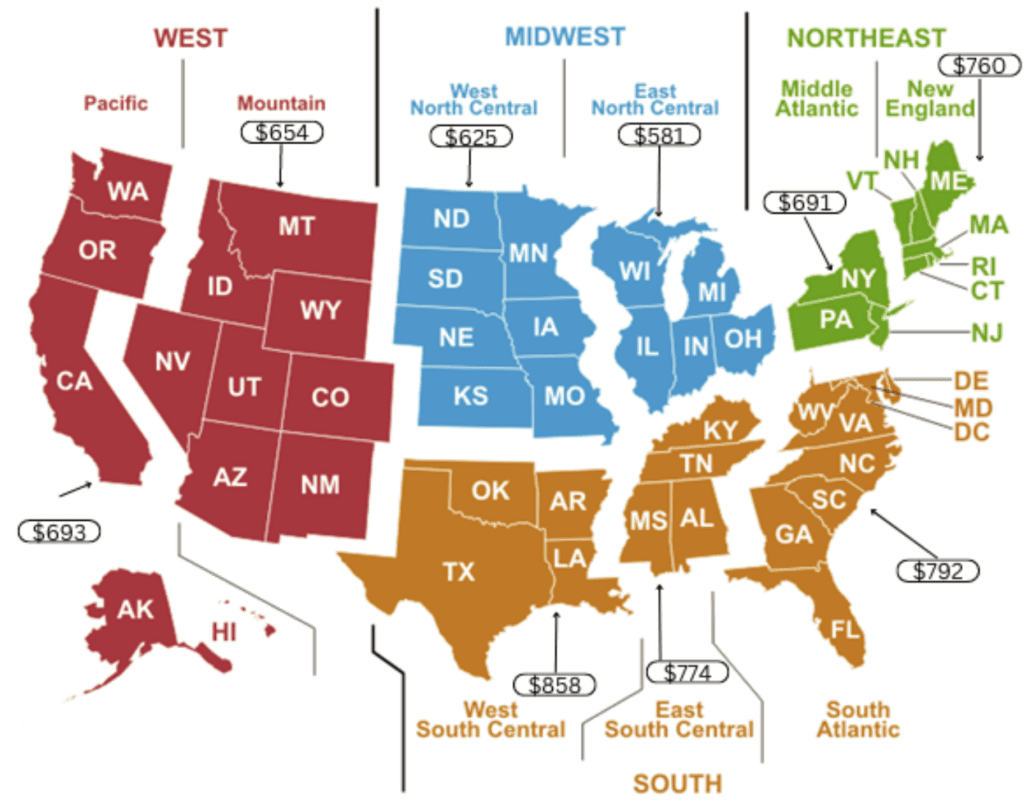Insulation is one of the best ways to reduce home energy costs, with a national opportunity to save 15 to 45 percent on costs, according to ICF’s Insulation Opportunity Study. With the unprecedented heat making energy costs increasingly unaffordable for all Americans but particularly low-income Americans, this cannot be overstated. A new report from the National Energy Assistance Directors Association (NEADA) and the Center for Energy Poverty and Climate (CEPC) underscores the need to rapidly expand energy assistance programs and weatherization activities to reduce the cost burden to these communities.

The analysis details that over the past decade, the cost of summer cooling in America has risen from $476 in 2014 to a predicted $719 in 2024. (The increase was calculated by NEADA, based on NOAA temperature data and EIA electric usage price data). The report also recommends ways to reduce the costs to these families, including increasing federal funding for low-income energy assistance and weatherization programs.
More Extreme and Dangerous Heat Waves
According to the National Weather Service, extreme heat causes more deaths each year than any other weather event, including floods, hurricanes, and tornadoes. At the same time, not all people bear the same impacts of extreme heat. Temperatures that would not feel excessive to a healthy individual (one without an underlying medical condition, who is not a child or elderly) can be dangerous for older adults, low-income households, and other vulnerable populations. Moreover, families in urban settings are much more susceptible to heat effects because of urban heat islands.
The resulting health impacts, including heat exhaustion and heat stroke, are life-threatening. As such, the report says, “extreme heat is a country-wide problem that must be combatted as such.”
Low-income families are particularly at risk during heat waves, as roughly 20% of these households don’t have air conditioning. They also spend a disproportionate amount of their income on utility costs – at 8.5% of income compared to non-low-income households at 3%. The percentage of households that could not pay their energy bill for at least one month last year rose from 21.3% to 23.5% last year and the most significant increase in households unable to pay their energy bill for at least one month was among households with children (an increase from 28.4% to 33.1%). For many families, the report says that this means foregoing necessities to pay energy bills.
NEADA and CEPC advocate for policy intervention to reduce potential health impacts and provide relief for those facing high energy cost burdens.
Recommendations
“Access to affordable cooling is more than a matter of comfort,” the groups conclude. “For Americans, especially low-income households and members of vulnerable populations, the difference can be as stark as either staying safe and cool or ending up in an emergency room as a result of heat stroke, heart attacks, or other heat-related conditions.”
NEADA and CEPC offer the following policy recommendations to address the affordability of home cooling:
Bill Payment Assistance: Utilities can provide tiered discounts to reflect households’ ability to pay. Several states already have different levels of discounts with successful outcomes, including Connecticut, which implemented a 50% discount on utility bills for families eligible for the Low Income Housing Assistance Program (LIHEAP).
Shut-Off Protections: Only 17 states and the District of Columbia offer some summer shut-off protections. Thirty-three states have no summer-shut-off protections, which could expose communities to extreme health conditions.
Restore Funding for LIHEAP: Federal funding for LIHEAP was reduced by $2 billion in FY 2024. That funding cut means reduced assistance to help consumers with cooling bills, make weatherization improvements such as air sealing and insulation, and minimize crisis assistance to families with utility arrears. States have reported to NEADA that 80% of LIHEAP grants are for heating assistance, but as temperatures increase, there’s a greater need in summer months to help families avoid the effects of extreme heat.
Increase Assistance to Weatherize, Retrofit, and Install Heat Pumps: While Congress has provided funding to help retrofit the nation’s low-income housing stock. Two programs designed to help retrofit low-income housing are the long-standing Weatherization Assistance Program (WAP) and, more recently, the High Efficiency Electric Rebate Program (HEERA), both approved by the Inflation Reduction Act.
The WAP allows homeowners to retrofit homes with air sealing and insulation, repair heating and cooling systems, and install hot water heaters. Still, WAP does not provide funding to replace cooling systems or cover the cost of adequately weatherizing housing stock and installing heat pumps. HEERA provides up to $14,000 that can be used to install high-efficiency measures, including heat pumps. Integrating the two programs together (conducting the air sealing and insulation upgrades first), could increase health and safety while reducing energy bills. However, both programs are funded as discretionary grants, so the program ends when the money runs out. The groups are calling on Congress to develop a long-term plan to fully fund WAP and HEERA as part of a strategy to retrofit the nation’s housing stock, reduce greenhouse gas emissions from electricity production, and make home energy more affordable for low-income families.
To read the full report, click here.
